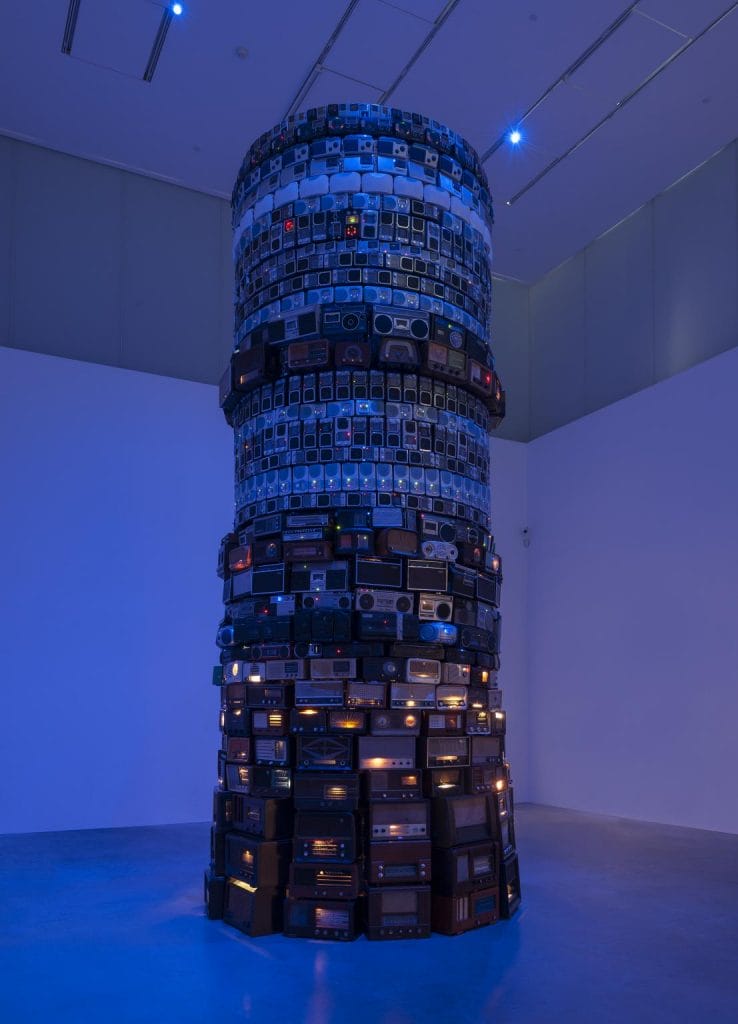In this reflective piece, IMI Independent Advisory Committee member Fernando Navarro Sánchez shares his thoughts on mediation and its parallels to the Tate Modern artwork Babel 2001.
Last July, on my way to my second experience as a judge of the International Bar Association’s annual Consensual Dispute Resolution Competition in Vienna, I spent a couple of days in London for work meetings. I happened to have some free time on a Friday afternoon, and I took the opportunity to cross the Thames over Blackfriars Bridge toward the Tate Modern museum.
It is a striking museum for its content, its architecture, and its location. Views of historic London from the terrace invite reflection—more so if you find the bar open and order one or two drinks. But what impressed me most was an artwork exhibited at the museum: Babel 2001 (pictured above), by Brazilian artist Cildo Meireles.
At the outset, the magnitude of the several-meter-high installation impresses the spectator, before attention is drawn to the variety of hundreds of sound devices—analog radios of old and more recent models—that the artist has combined in a tower on top of each other, tuning each into a different frequency. The work, as its name suggests, refers to the biblical Tower of Babel. According to the Old Testament, construction of the Tower offended God, who in response caused people to speak different languages. This prevented them from being understood, and as a result saw them scattering to different places. This was, at least according to the Bible, the episode that gave rise to human conflict.
In the contemporary version of the Tower of Babel materialized in the work of Meireles, one can make a more or less simple interpretation: human diversity manifests itself in many ways of communicating. We each speak from our own particular reality, perspective and context. That is natural and common, and in itself is neither good nor bad. What does have good or bad consequences is what happens when the message between one and another interlocutor is disrupted by that lack of understanding. Or even worse, when we focus our attention on the message we give and not on the message we receive. This phenomenon is what generates conflict, and handling such miscommunication dictates whether the conflict ends in a fight or a solution. And generally over time and as the conflict becomes worse, misunderstandings grow and positions polarize. We see it again and again in public and private matters, locally and globally.
I recognize the bias I have as a mediator who is passionate about its implications and possibilities in life, and therefore I tend to see things through the lens of mediation. But with that precautionary statement, I confess that Babel 2001 seemed to me a magnificent manifestation of a lack of understanding as a source of human and legal conflicts and therefore of mediation as a space of balance and harmony—alluding to Meireles’ radios—as it in this space that mediation finds its most important function. Mediation balances different communication messages, separates everything that pollutes message clarity, and fosters understanding among people. The mediator works to put people in the same ‘tone’: and with that, it facilitates the construction of agreements and solutions.
The couple that divorces, the partners with different needs and objectives, the supplier who did not see her expectations met and whose expectations were different from those of the client… so many human relationships are affected by the lack of tune.
A simple but powerful lesson that art provides.
Originally published in Spanish via LinkedIn; English translation provided by the author. Featured image from the Tate Modern website.



Good job Fernando. Thank you for your essay. Best from Gdynia in Poland. Elżbieta